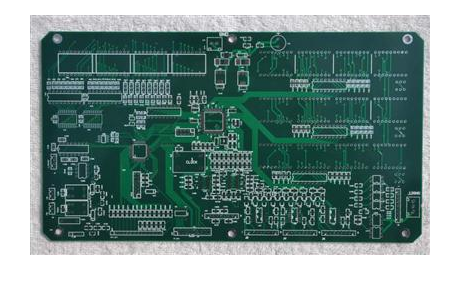What are the differences in the number of circuit board layers
Circuit boards are divided into single-sided circuit boards, double-sided circuit boards and multi-layer circuit boards. Multi-layer circuit boards refer to circuit boards with three or more layers. The manufacturing process of multi-layer circuit boards will add the manufacturing process of inner lamination on the basis of single and double panels. Distraction using slices can also be analyzed. Let’s take everyone to find out!
Single-sided circuit board
We just mentioned that on the most basic PCB, the parts will be gathered on one side, and the wires will be gathered on the other side. Since the wires only appear on one side in between, we call this kind of PCB a single-sided (Single-sided). Because single-sided circuit boards have many serious bindings on the planned circuit (because only one side is needed, the wiring room cannot be crossed* and it is necessary to go around a separate path), so only the previous circuit is used to use this type of board.

Double-sided circuit board
This kind of circuit board has wiring on both sides. However, to use double-sided wires, it is necessary to have a proper circuit connection between the two sides. The "bridge" between such circuits is called a via. Guide holes are small holes on the PCB that are covered or coated with metal, which can be connected with double-sided wires. Since the area of the double-sided board is twice as large as that of the single-sided board, and because the wiring can be interwoven (can be wound to the other side), it is more suitable for use in circuits that are more messy than the single-sided board.
Multilayer circuit board
Multi-layer circuit board: In the case of more messy application requirements, the circuit can be arranged into a multi-layer plan and pressed together, and through-hole circuits are arranged between layers to connect the circuits of each layer. The inner circuit copper foil substrate is first cut into specifications suitable for processing and production. Before laminating the substrate, it is usually necessary to properly roughen the copper foil on the surface of the board by brushing, microetching, etc., and then attach the dry film photoresist tightly to it at the appropriate temperature and pressure. The substrate with dry film photoresist is sent to the UV exposure machine for exposure. The photoresist will undergo polymerization reaction after being irradiated by ultraviolet rays in the light-transmitting area of the negative (the dry film in this area will be affected by the later development and copper etching process). Save it as an etching resist), and transfer the circuit image on the negative to the dry film photoresist on the board. After tearing off the maintenance film on the membrane surface, first use sodium carbonate aqueous solution to develop and remove the unlit area on the membrane surface, and then use a mixed solution of yansuan and hydrogen peroxide to corrode the exposed copper foil to form a circuit. At the end, use an aqueous solution to wash away the dry film photoresist that has retired.
In fact, the most common and simplest way to distinguish is to pick it up against the light, the inner core is opaque, that is, all of them are black, which is a multilayer board, otherwise it is a single and double panel. The single-sided board has only one layer of wiring, and there is no copper in the hole. The double-sided board has lines on the front and back, and there is copper in the lead-through hole.
For inner circuit boards with more than six layers (inclusive), use an active positioning punching machine to punch out the riveting reference holes for the alignment of the interlayer circuits. In order to increase the wiring area of the four-layer circuit board, the multi-layer board uses more single or double-sided wiring boards. The multi-layer board uses several double-sided boards, and a layer of insulating layer is placed between each board and then glued (compressed) firmly. The number of layers of the board means that there are several independent wiring layers. Usually the number of layers is even and contains the two outermost layers. Most motherboards are planned with 4 to 8 layers, but technically it can achieve nearly 100 layers.